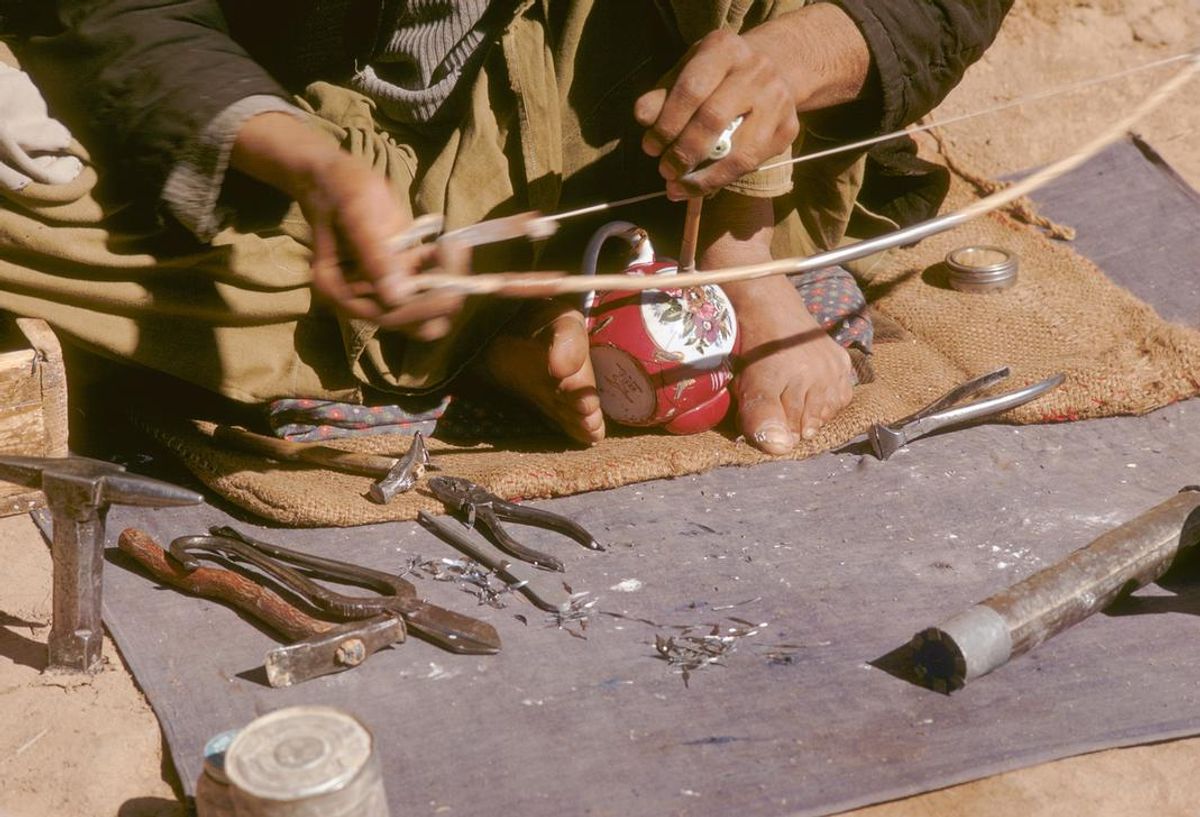In 1999 in Rome, a meeting took place between the last king of Afghanistan, Zahir Shah, and Zalmay Khalilzad. The US Special Envoy was seeking a regime change and presented the toppled king with an elegant analogy. Zahir Shah needed to bring a broken Afghanistan back together, to mend a country fractured along social, ethnic, religious and political lines. Zahir Shah was, according the Special Envoy, about to become the patragar of Afghanistan.
A patragar is an artisan from Central Asia dedicated to the careful mending of precious broken porcelain teapots generally imported at great cost from China, Japan and Russia. This profession was exercised in the cities’bazaar by older, learned men. There also used to be itinerant patragars, travelling from village to village, from chaïkhana (teahouse) to chaïkhana. These artisans were fiercely independent, and one of the rare professions not connected to any particular guild or corporation.
Imported porcelain teapots were seen as objects of social and economic value and displayed on the chaïkhana of any respectable village across the silk road. As the teapots were hard to come by, the profession of patragar was essential to the maintenance of one of the region’s main traditions, tea-drinking. Therefore, pieces of the body were carefully glued together using a mixture of lime and eggs before being strengthened by metal clamps or staples (patra), attached to the shard through small holes pierced with a bamboo stick with a gramophone tip as a drill (darma).
While the patragar has almost disappeared entirely as a profession, some of these pots can still be seen on the shelves of chaïkhana across Afghanistan today. Pots that have been repaired are exhibited as objects of higher value, though they are still also used simply to serve tea.
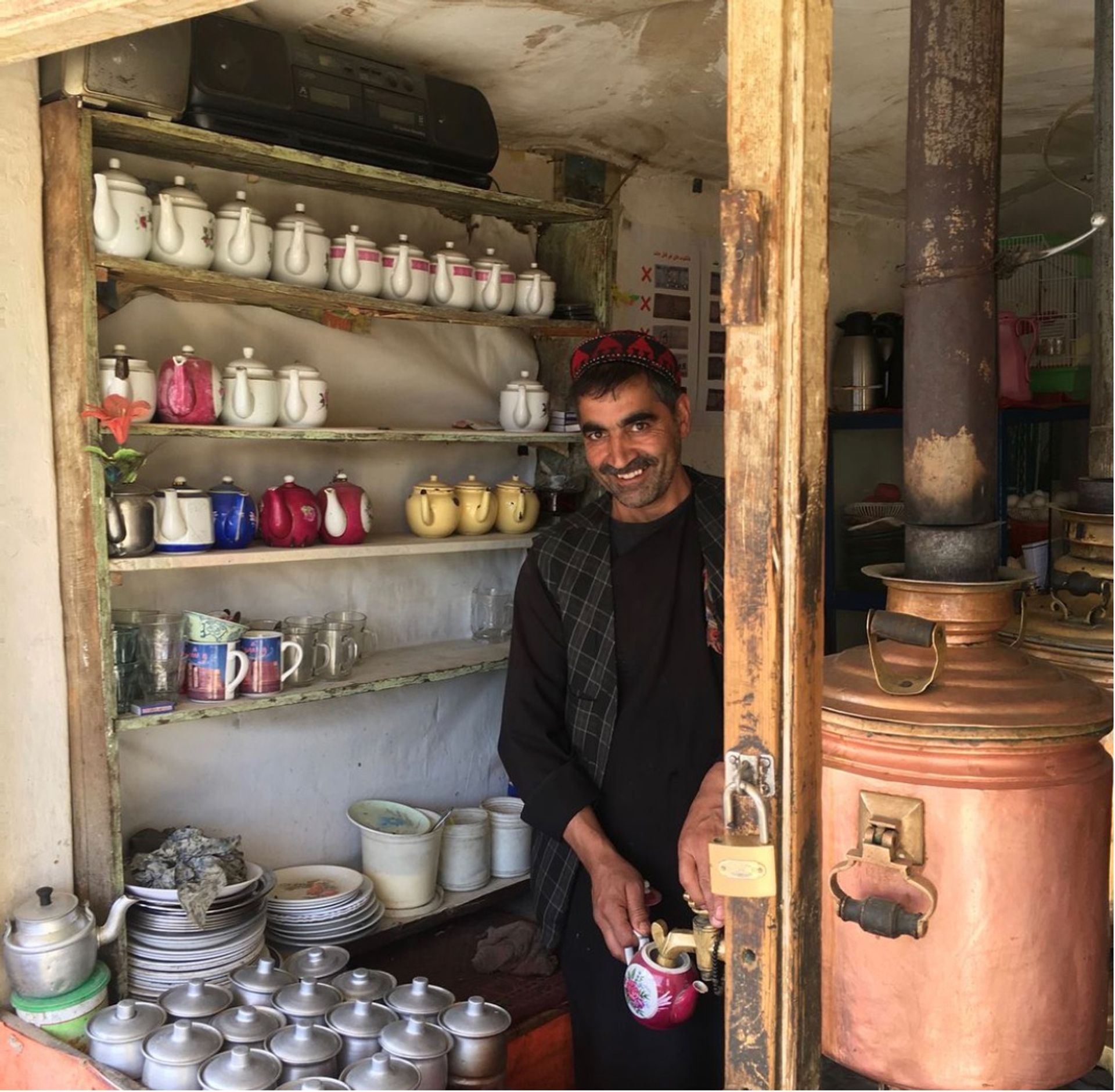
Gol Mohammad, a samovarchi and owner of a chaïkhana in Istalif, in 2017. On the shelves, he proudly displays his collection of repaired teapots. Photo: © Bastien Varoutsikos
In Afghanistan, there is a relationship between the processes of breaking and mending, objects and tools, that is rooted in the country’s approach to material culture. This is particularly seen in the myths surrounding the manufacture of the rubab, a central Asian double-chambered lute.
The rubab is carved from a single piece of Shahtut, the Afghan king mulberry tree. The instrument traditionally has a mystic origin, and Ustad Qadiri, a famous rubab-maker in Kabul, says that “after God had created the world, he then created Adam. But Adam had no spirit. So God made the rubab, the sound of which induced the spirit to enter Adam.”
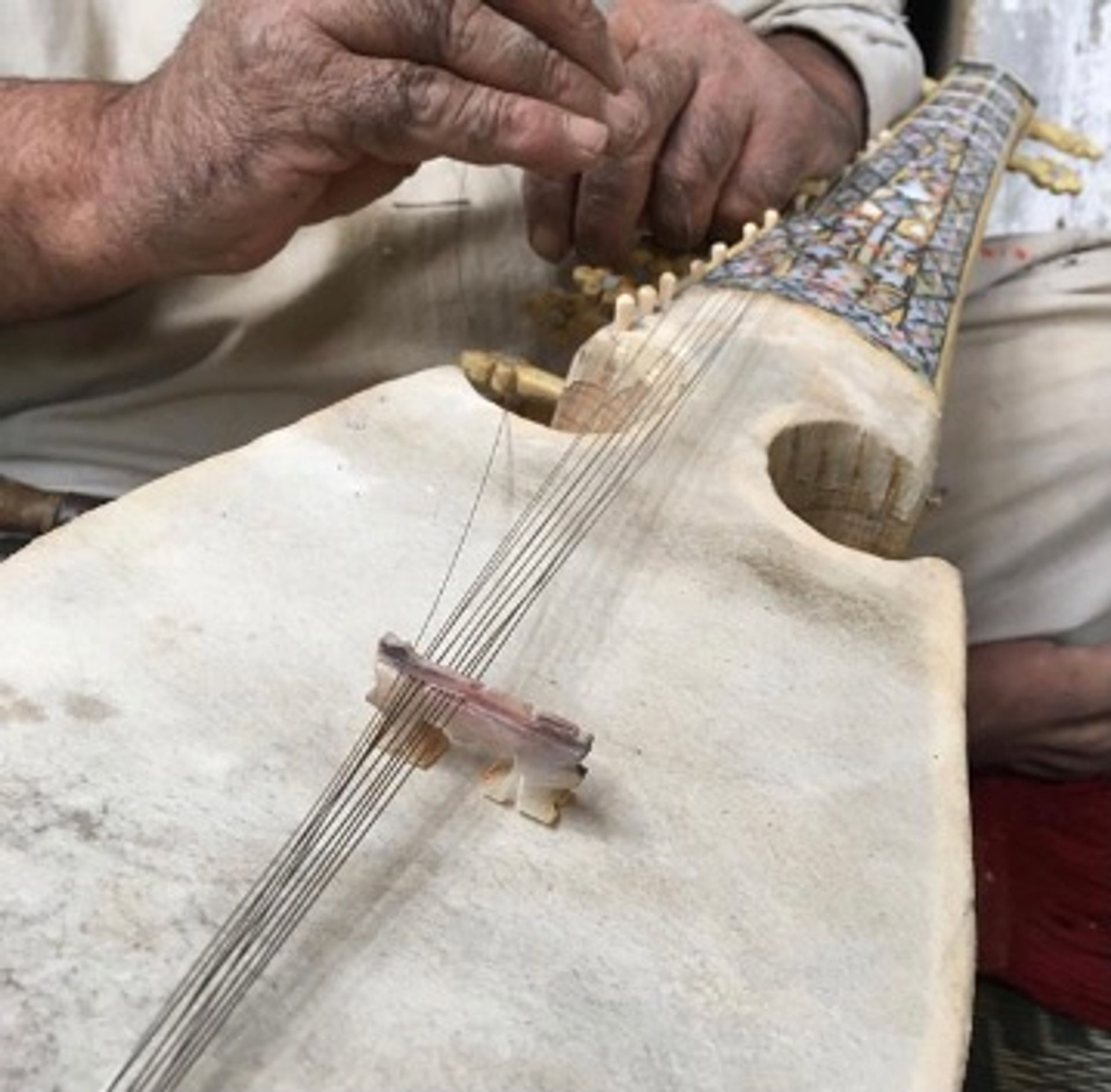
An artisan finishing the production of a medium-sized rubab in 2018. Photo: © Bastien Varoutsikos
The production of a rubab starts with several days spent carving out the hard mulberry wood and involves skills from carpentry to mother-of-pearl inlay, resulting in an instrument that can last for several generations. Although they can be found from Iran to India, Afghan rubab are particularly famous for the quality of their sounds. As such, the instrument plays a central role in Afghan society. Among Afghan makers, three families of luthiers have entered mythology status—Gharib, Wasl, and Qadiri—each of which use different techniques and different symbols on their rubab.
An instrument that is passed down from generation to generation, is bound, occasionally, to break. While many rubab were destroyed under the first Taliban regime, some instruments display traces of wear and patina that seem older than 20 years. And any breaking tends to occur on the main body of the instrument, across the two chambers. Repairing a rubab involves a mixture of wood glue and colored wood dust applied along the fracture, after which the instrument is re-carved, re-decorated when needed, and re-polished.
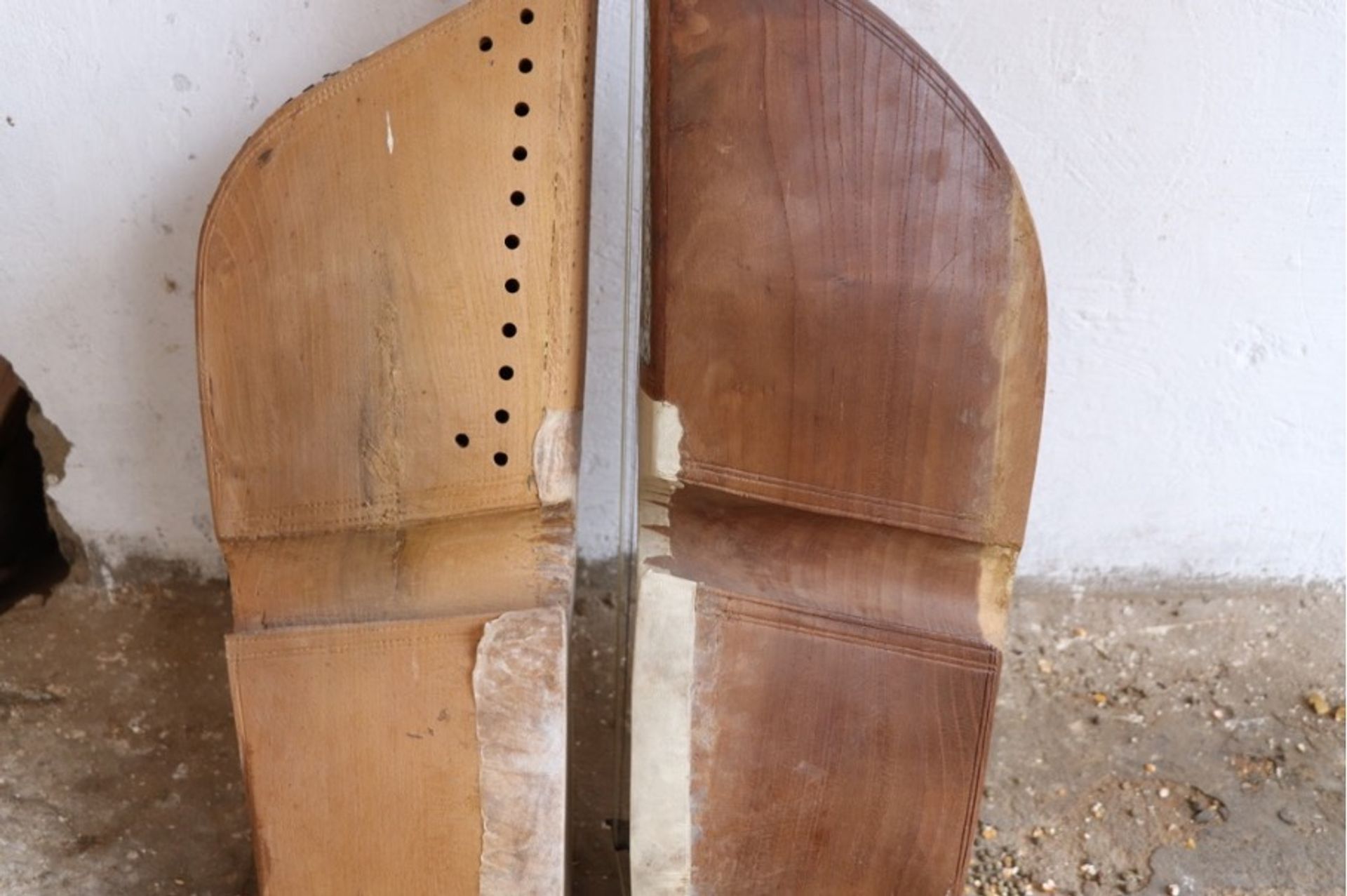
Two rubab, the older instrument on the right has been broken and mended. Photo: © Bastien Varoutsikos
Far from hurting the instrument, traces of breaks on the contrary tell the history of the piece. For this reason, the repair is sometimes highlighted, in a way not dissimilar to the Japanese method of kintsugi. Instrument makers often insist that broken rubab produce much better music than the untouched ones. Some have even suggested that rubabs have been intentionally broken at the end of the building process, precisely to create this sound.
Mending has been part of the world of craft for as long as we know. From the Japanese kintsugi to the mending of French dentelles, cultures have looked for ways to repair, reuse, and sublimate an object by accepting its imperfections and telling the story of its rebirth. In Afghanistan, this philosophy is omnipresent, particularly in the Nowruz celebrations, where coppersmiths restore, mend and clean bronze samovars or brass quba (the mosque’s cupolas).
However, these traditions are disappearing. During a survey of the Mazar-e Sharif coppersmiths guild in 2018, only four workshops were left, down from more than 20 in 2001. People purchase cheaper, replaceable wears from Pakistan or China rather than pay to repair their old ones. Patragar have all but disappeared in Afghanistan and few chaïkhana are still using repaired teapots. Similarly, while the role of rubab makers in the instrument’s repair is still central, the tradition of breaking the rubab has disappeared. Many communities are replacing old with new, and leaving aside strategies that are not only sustainable, but deeply rooted in identity and community.
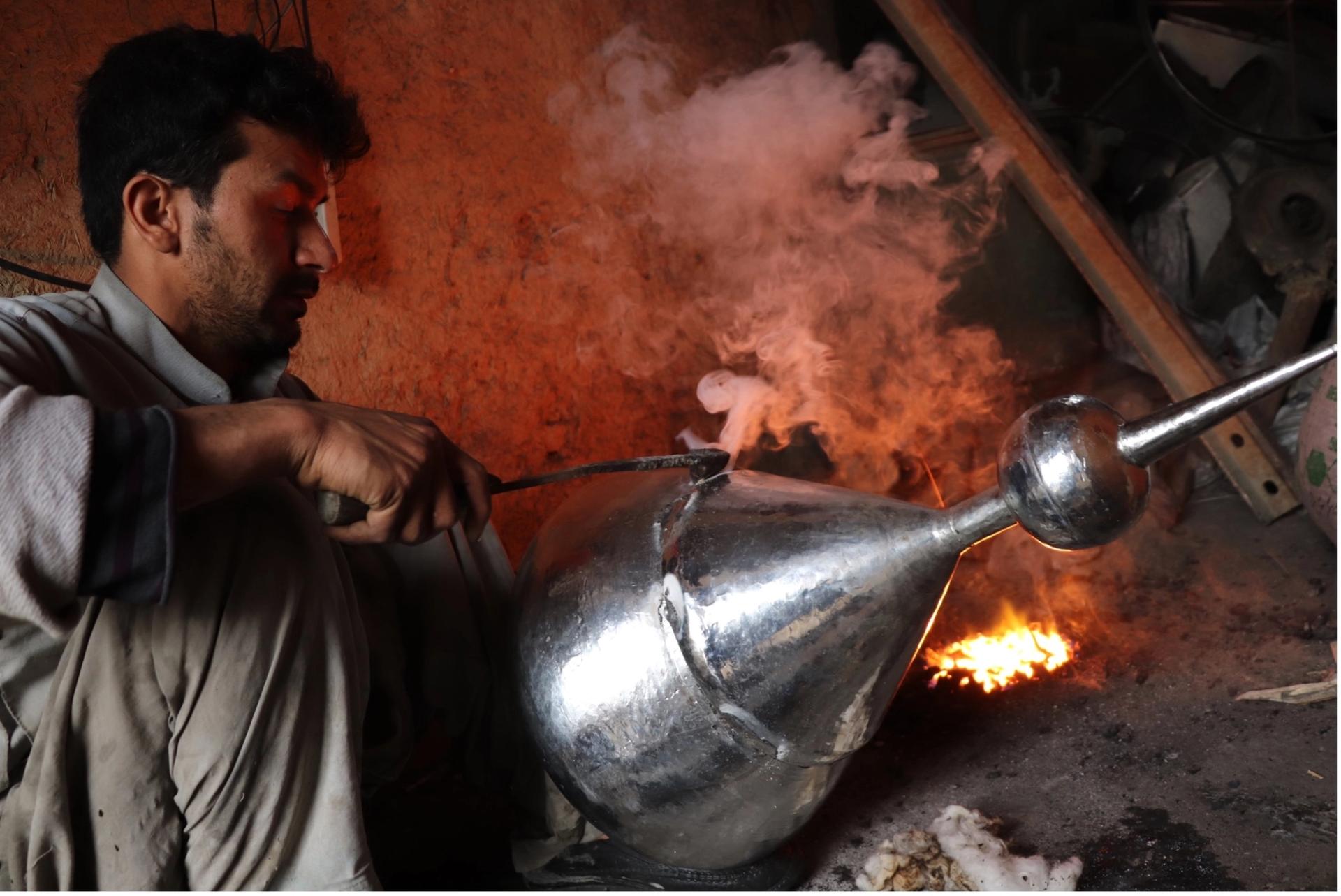
A mazari coppersmith in the middle of galvanizing a restored quba from the Hazrat Ali shrine, in Mazar-e Sharif, Afghanistan in 2018. Photo: © Bastien Varoutsikos
Afghanistan has been at war, with others and with itself, for approximately 45 years. The impact on the practices, the traditions and the social fabric is difficult to evaluate. In a country torn and mended several times over, quick fixes just will not do. Zahir Shah never made it back to the throne and Khalilzad’s following attempts at reconciliation between clans, tribes or ethnic groups failed. Objects, like communities, get made, unmade, broken. The danger lies in forgetting how to mend.
You can read our ongoing series "Dispatches from Afghanistan" profiling Afghan artistsand their experiences since the rise of the Taliban—including a rubab player—here and find a list of resources to help Afghan creatives here.


